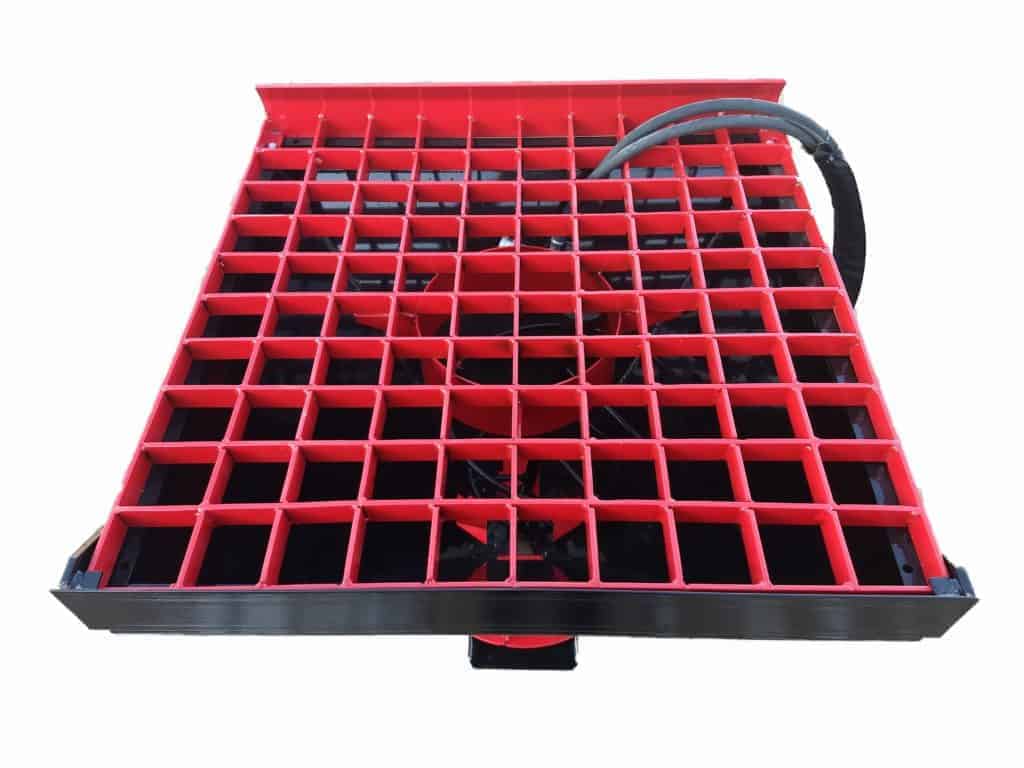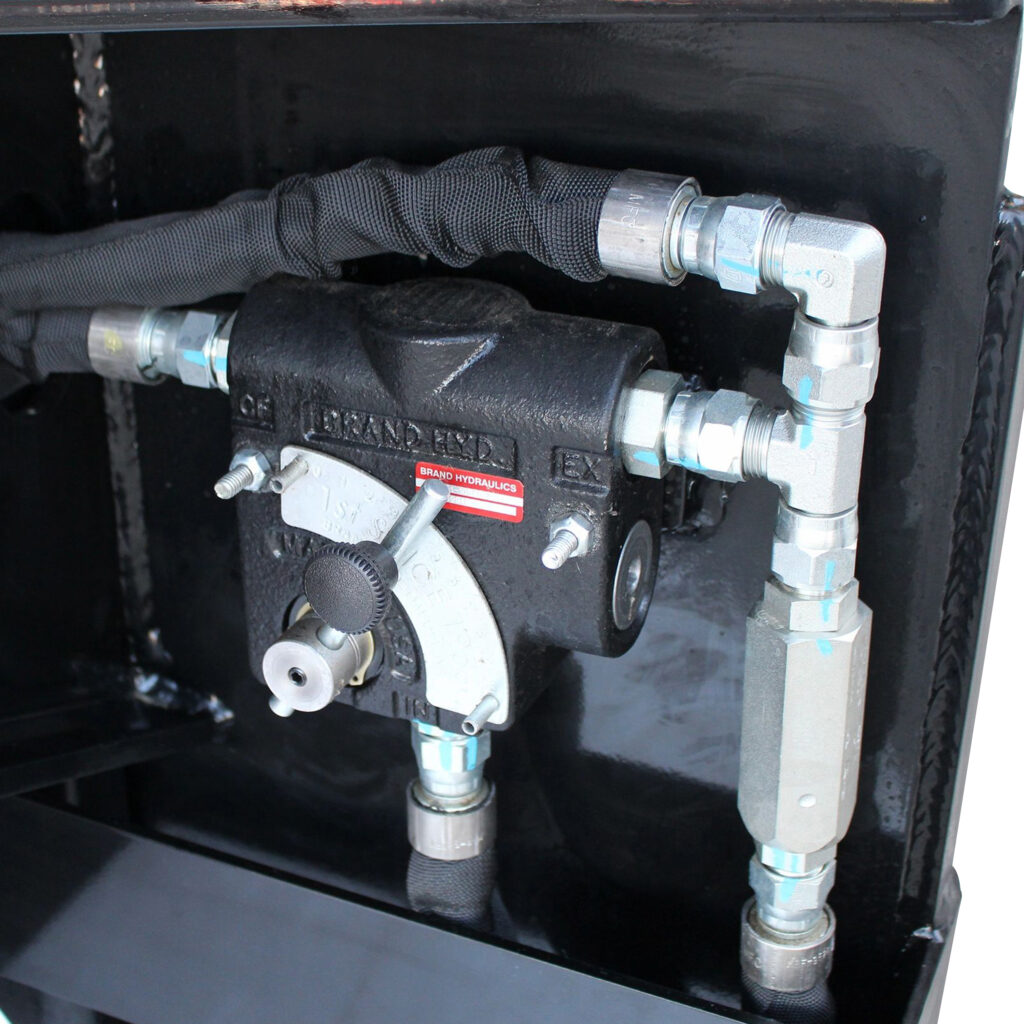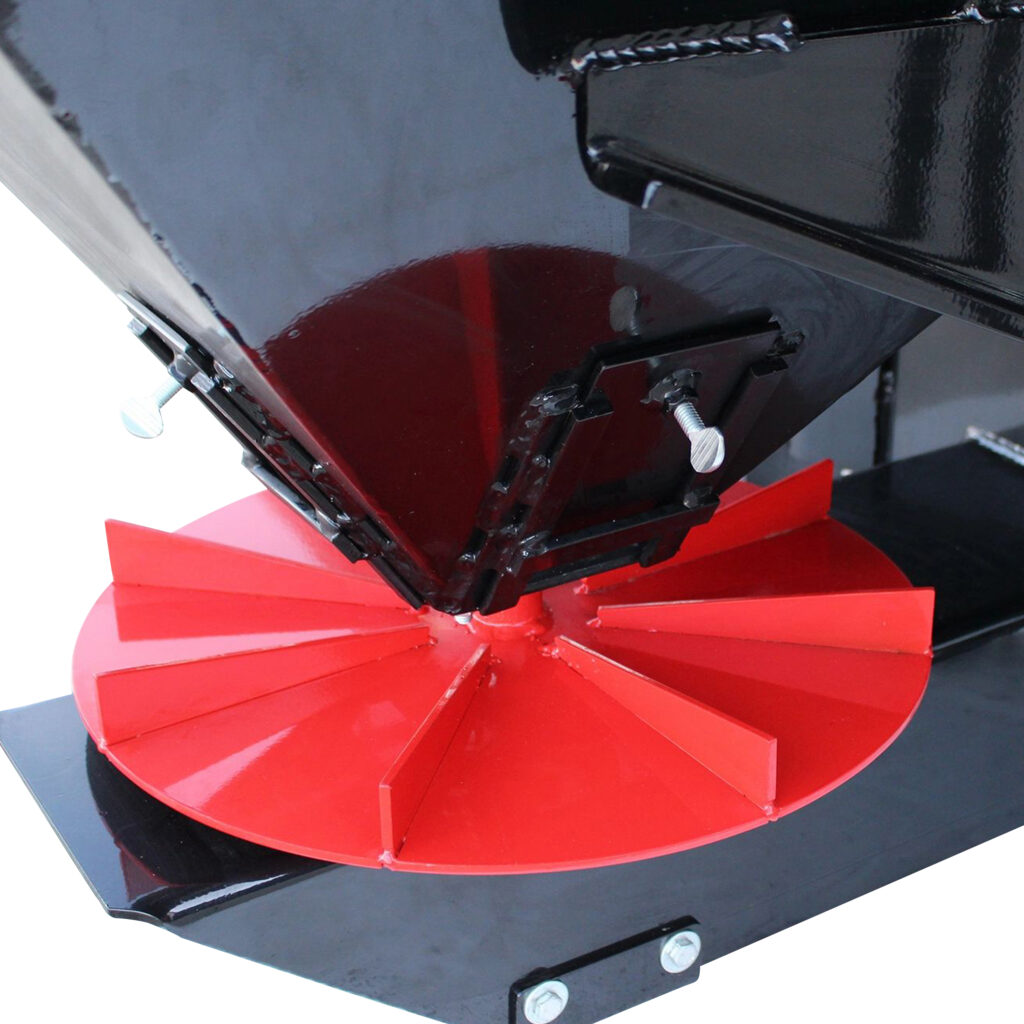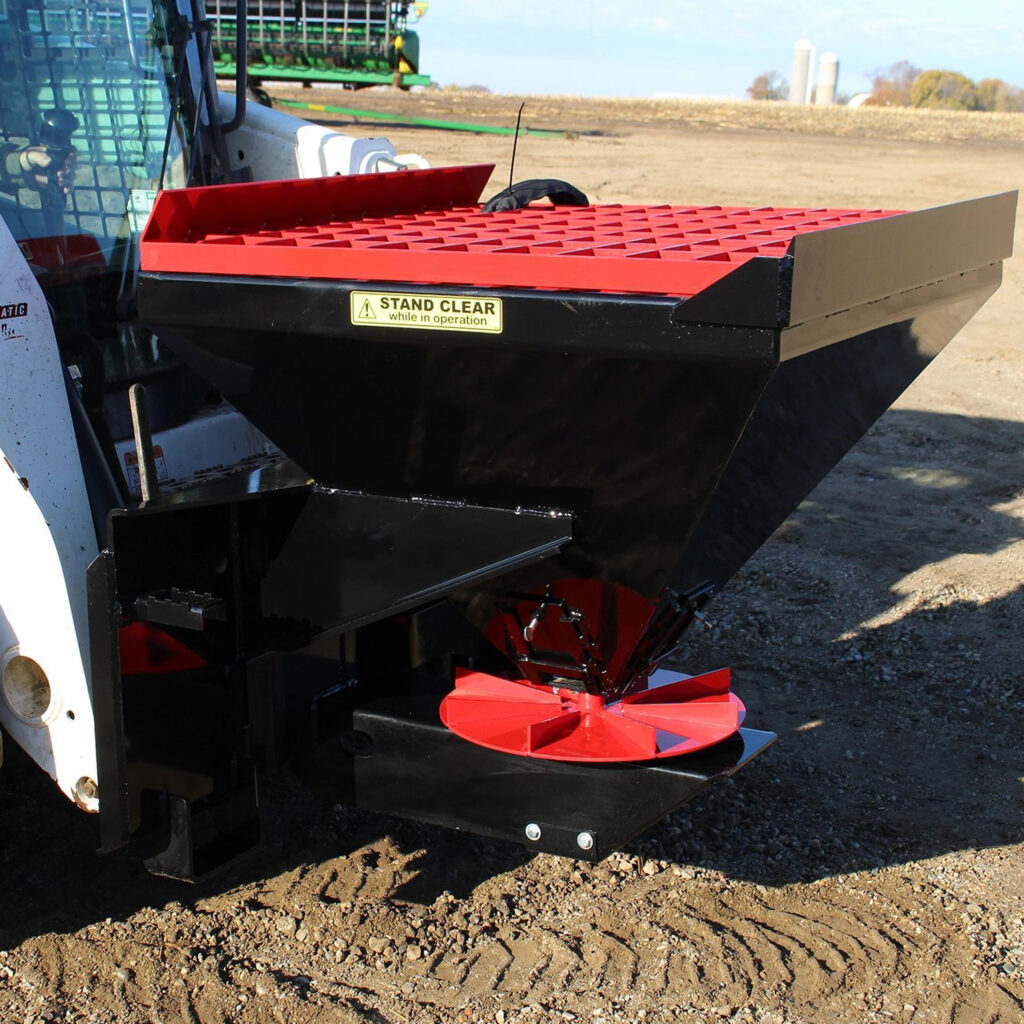Sand spreaders are equipment that are specifically designed to assist in the removal of snow. Every year, businesses, landscape companies, municipalities, homeowners, and farmers across America require snow removal tools. However, do you know why a sand spreader is necessary in addition to typical snow removal tools during the winter? Messer Repair is here to guide you through the benefits of using a sand spreader with this helpful guide.
What is a sand spreader used for?
A sand spreader can spread anything from sand, salt, grass, seed, fertilizer, and lime. However, the sand spreader provides a return on investment during cold winter. Whether you’re maintaining a commercial property, working on a farm, a construction site, or a large tract of land…you need to plan your winter response.
Using a sand spreader, you are actively planning to keep your property safe and stay operating during the winter months. It’s just that after you deploy the sand spreader, you have to think about what you’re doing beyond that.

A sand spreader is a magnificent piece of equipment that will provide yearly ROI. How much time are you willing to lose because you can’t move equipment around your farm or work site? What about the increased risk of injury due to icy roadways and walking paths? Plus, it’s not just snow plows and trucks that can get in on the side work of clearing businesses and churches.
A world of sidewalks, public walkways, and outside gathering spots must be primed to defeat icy dangers. A sand spreader opens up a world of possibilities to everyone who owns it.
Does sand actually melt ice and snow?
Sand doesn’t melt ice and snow. The real question is why sand is better than your standard salt application. Modern rock salt is gritty and a mix of salt and sand elements. Salt melts, while sand prevents further accumulation.
How do I keep my driveway from freezing?
A frozen driveway ruins many mornings. Honestly, it can ruin many afternoons and evenings, too. This is where the argument about laying down sand before an ice-wintry mix hits your area comes into play. A little sand in your driveway before a freeze shouldn’t hurt anything.
The catch is that sand is only effective on the surface of ice. In the past, people would use things like kitty litter and masonry sand to get leverage when backing out or pulling into slick surfaces. But, for you to actually melt ice and snow…you need to spread salt.

Why is sand spread on roads?
Sand is being spread on more roadways as a modern attempt to solve snow removal problems. The rock salt that you most commonly see being deployed is a mixture of salt and sand. However, the sand used to help give vehicles tractions tends to be more of the sandbox variety.
Can you put salt in a sand spreader?
Sand spreaders are capable of spreading many things. Just as you can put sand in a fertilizer spreader, you can put salt into a sand spreader. The overall mechanics are the same. Plus, there’s less worry about containments.
If you are worried about mixing spreads, then don’t. However, most end users will have no trouble putting salt in a sand spreader.
How do you spread sand on a driveway?
Spreading sand on a driveway involves some planning, but anyone can do it. While a sand spreader makes the work easier, you must ensure what kind of sand you’re spreading. Don’t use masonry sand, as it spreads way too fine.
What is called sandbox quality sand tends to be thicker and a little more coarse. The sand applied via a sand spreader needs to be thick enough to break up accumulation and give tires something to grip.

What is the best sand for block paving?
The best sand for standard block paving is kiln-dried sand, as it is less likely to wash off than building sand. Use sharp sand for better results. When using a sand spreader, you’ll have different considerations.
While sand doesn’t melt ice like salt, it provides valuable winter traction. Sand spreaders are handy for driveways, walkways, and even protecting block paving. Choose coarse sand like concrete or sandbox sand for driveways, and opt for finer kiln-dried or polymeric sand for block paving. Dry sand spreads best, and salt-sand mixes should be used sparingly. With the right sand and a little planning, your sand spreader becomes a powerful winter ally, keeping you safe and operational through the coldest months.
However, when it comes to protecting block paving during snow removal…there is a tip to heed. Salt can’t irritate certain kinds of paving when applied directly, so use a sand spreader to provide a degree of protection.
- Agriculture:
- Prevents livestock injuries by providing better traction on icy surfaces in fields and barnyards, protecting animal wellbeing.
- Maintains access to outdoor areas for livestock, ensuring their exercise and health during winter.
- Business and Commerce:
- Ensures safe customer entryways, reducing slip-and-fall risks at retail stores, restaurants, and offices.
- Supports operational continuity by keeping pathways clear for employees and visitors.
- Municipal and Public Spaces:
- Enhances road safety by improving vehicle traction on icy roads and bridges.
- Maintains pedestrian safety on sidewalks and public walkways in urban areas.
- Residential Use:
- Home safety: Prevents slips and falls around personal property by treating driveways and walkways.
- Community spaces: Keeps parks and school playgrounds safe and accessible.
- Industrial and Construction Sites:
- Promotes worksite safety by reducing the risk of accidents in icy conditions.
- Secures vehicle and equipment operation by providing traction for heavy machinery.
- Recreational Facilities:
- Ski resorts: Ensures visitor safety in parking lots and walkways.
- Outdoor event venues: Keeps areas safe for attendees during winter events.
In every scenario, the use of sand spreaders is essential for ensuring safety, enhancing accessibility, and maintaining smooth operations during the winter months.
Should I put sand down before it snows?
Opinions are divided when it comes to putting sand down before it snows. If you need assistance in dealing with icy spots that frequently form in crucial locations, putting sand down can be helpful. However, if the objective is to eliminate snow and ice without causing any damage to the pavement, then using salt is the way to go.
Is sand good for melting ice?
Sand is known for its ability to aid in the melting of ice. But how does it work? Sand alone does not affect the temperature of ice. Rather, it is useful in preventing or removing the buildup of ice. These accumulations of ice, often found in shady areas or on unexposed roadways, are commonly referred to as ice build-ups.
Sand promotes improved traction for vehicles that have to travel in icy areas. However, if you’re looking to melt ice and snow, you want to include salt while spreading. That’s not to promote using one item over the other but to highlight how they both work together.

What states use sand instead of salt for melting snow?
Several states use sand along with salt to help in snow removal. In fact, Home Depot, among other places, has salt and gritty mixtures for ages to smaller homeowners. But, if you’re a commercial worker or farmer, you will need a supplier to mix your needs.
While that is easier to find in rural areas, there are many vendors online who are willing and ready to help you throughout the country.











Leave a Reply
You must be logged in to post a comment.